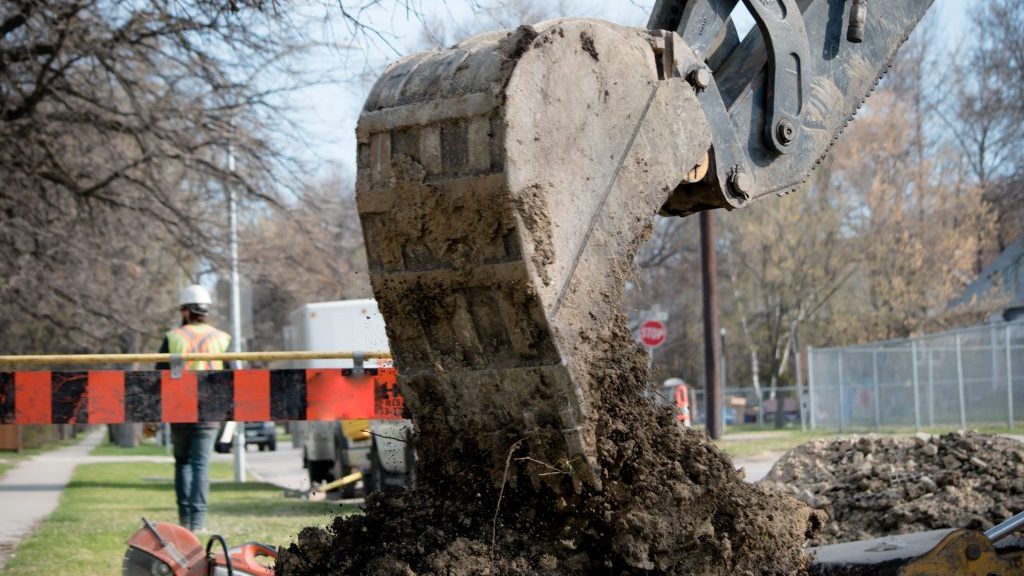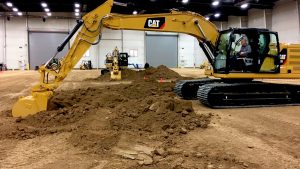The backhoe has long been a popular machine on construction sites. It combines the function of a wheel loader and an excavator into one machine, sometimes eliminating the need to purchase a second machine.
Decreasing backhoe sales for more than a decade has led some to speculate on whether this machine category has a future on construction projects. But each year, a heavy equipment manufacturer announces updates to their backhoe models. There is still a lot of research and development going into this product category.
Caterpillar, for example, has announced a new backhoe, the 440 BHL backhoe, and changes to their 450 BHL backhoes. This brings the total number of Caterpillar backhoe models to seven.
“The 440 and 450 are designed and developed for primarily the utilities market,” says Dustin Adams, a product application specialist with Caterpillar. “These machines are designed for digging in abrasive/hard surfaces, moving/lifting heavy structures such as steel trench plates and concrete manhole boxes, and operating hammers/breakers among other hydromechanical attachments.”
Almost all of the features on each machine is identical except for size. The 440 has a standard dig depth of 15 feet, a 118 (gross) hp rating and a loader lift capacity of 3,990 kilograms; the 450 has a standard dig depth of 17 feet, a 146 (gross) hp rating and a loader lift capacity of 4,030 kilograms.
“The 440 was designed to introduce new technology, increase operator comfort and ergonomics. Most importantly, it was designed to complement our 15-foot-size-class backhoe and boost performance. The new 440 increases rear lift capability by 25 per cent,” says Adams.
“The 450 was redesigned to introduce the same technology, increase operator comfort and ergonomics. Additionally, the 450 was updated to be Tier 4 Final emissions compliant.”
In these new machines, research went into designing a machine with better balance and load control, as well as new hydraulic infrastructure.
“We have just introduced a new hydraulic infrastructure that enables seat-mounted controls on the new 440 and 450,” says Adams. “The seat-mounted controls allow the operator to quickly switch from loader to backhoe operation without having to adjust rear controls, thus reducing operator motions and improving efficiency and ergonomics.”
The new operator station with seat-mounted controls has sensors that detect the seat’s position, so that the controls stay with the operator regardless of forward (loader) or reverse (excavator) operation, thereby reducing the number of controls needed to operate the machine, which in turn creates more space inside the cab.
“The infrastructure also enables programmable features such as operator control modes (response and modulation), loader kickout, return to dig, and parallel lift. We have seen advances in technology on other Cat products such as small wheel loaders, skid steer loaders and compact track loaders, and we are now leveraging that technology on backhoe loaders,” he adds.
The new machines have a centre-pivot-mounted excavator boom.
“Centre-pivot machines have higher lift capacities and increase breakout performance on the rear of the machine. The centre-mounted boom and stabilizer design contributes to those capabilities,” says Adams.
The alternative is a side-shift-mounted boom.
“Side-shift machines are better in tighter spaces because of the narrower rear footprint and ability to shift the boom to the outside edge of the machine,” he states. “This allows operators to work parallel to curbs and buildings and shift accordingly without having to reposition the entire machine.”
At the front of the machine, both backhoes have common single-tilt loader arms.
Sensors positioned at the tilt and lift arm allow for parallel arm movement, which increases material retention when using a bucket and increases stability when using a pallet. A programmable kick out allows the operator to establish upper and lower arm positioning when performing repetitive work, such as truck loading. The return-to-dig feature increases productivity by automatically returning the bucket to a specific point, thereby eliminating time “finding” the correct elevation, the company describes.
The optional loader quick coupler delivers quick work tool changes. Auxiliary hydraulic flow to the work tool accommodates a plethora of powered attachments.










Recent Comments
comments for this post are closed